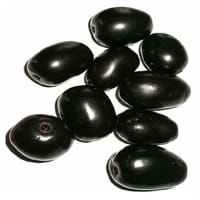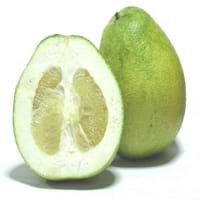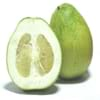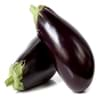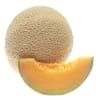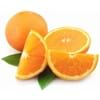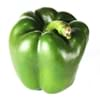Health Benefits
Cancer prevention, Heart care, Increase in haemoglobin, Regulates Blood Sugar, Ulcer prevention
Cancer prevention, Heart care, Prevents Urinary Tract Infection
General Benefits
Boosts immune system, Digestive aid, Fights against infections, Strengthens bones
Digestive aid, Fights against infections, Flu treatment, Healing of wounds, Helps in weight loss, Treatment of common cold
Skin Benefits
Brightens and lightens complexion, Skin cleansing, Skin rejuvenation, Treatment of acne, Treatment of dark spots
Anti-aging benefits, Brightens and lightens complexion
Hair Benefits
Promotes longer and healthier hair, Protects hair
Promotes longer and healthier hair, Protects hair
Allergy Symptoms
Abdominal pains, NA
Abdominal cramps, Abdominal pains, Diarrhea, Lightheadedness, Nasal congestion, Nausea, Swallowing difficulties, Swelling of mouth, tongue or lips, Vomiting
Side Effects
Decrease in blood sugar levels, Allergic reaction, Throat irritation, Throat swelling, Possibly unsafe during pregnancy
Allergic reaction, Dizziness, Stomach pain
Best Time to Eat
As a snack in the late afternoon, Don't consume at night and before bed, Eat the fresh ones, avoid mixing with any other foods, don't eat after meal., Morning time (before lunch), Strictly avoid empty stomach
As a snack in the late afternoon, Don't consume at night and before bed, Eat the fresh ones, avoid mixing with any other foods, don't eat after meal., Morning time (before lunch)
Vitamin A (Retinol)
Not Available
Vitamin C (Ascorbic Acid)
Phytosterol
Not Available
Calories in Fresh Fruit with Peel
Calories in Fresh Fruit without Peel
Not Available
Not Available
Calories in Frozen Form
Not Available
Not Available
Calories in Dried Form
Not Available
Calories in Canned Form
Not Available
Not Available
Calories in Jam
Not Available
Type
Tree fruit, Tropical
Citrus, Tropical
Season
Monsoon, Summer
All seasons
Varieties
Ram Jarnun and Paras
Chandler, Cocktail, Cuban Shaddock, Hirado Buntan, Honey, Jaffa Red, Mato Buntan, Pomelit, Reinking, Siamese Sweet and Sweetie
Color
Black, Magenta, Purple
Green, Pink, Red, Yellow
Inside Color
Purple
Creamy Yellow
Taste
Astringent, Sweet
Juicy, Sweet
Origin
Bangladesh, India, Indonesia, Malaysia, Nepal, Pakistan, Philippines, Sri Lanka
Malaysia, South-Eastern Asia, Thailand
Soil Type
Loam, Sandy loam, Well-drained
Clay, Loam, Sandy
Climatic Conditions
Humid, Rainfall
Warm
Facts about
- Wood of jambul tree is water-resistant wood & is used in railroads and to implement engines in the well.
- In Indian mythology, it is said that Jambul fruit was revered by Buddha.
- Jambul has a huge importance in Ayurveda.
- Flowers of pomelo fruit are used to make perfumes.
- Pomelo tree wood is used for the manufacture of tool handles.
- Life of pomelo tree is around 10 years.
- Height of pomelo can be 15-20 feet.
Other Countries
Bangladesh, Indonesia, Malaysia, Nepal, Pakistan, Philippines, Sri Lanka
Argentina, India, Israel, Mexico, South Africa, Sudan, Thailand, Turkey, United States of America
Top Importer
Not Available
Europe
Top Exporter
India
United States of America
Botanical Name
Syzygium cumini
Citrus maxima
Synonym
Eugenia cumini
Citrus grandis
Subkingdom
Tracheobionta
Tracheobionta
Division
Magnoliophyta
Magnoliophyta
Class
Magnoliopsida
Magnoliopsida
Order
Myrtales
Sapindales
Family
Myrtaceae
Rutaceae
Species
S. cumini
C. maxima
Generic Group
Not Available
Citrus fruit
Difference Between Jambul and Pomelo
We might think that Jambul and Pomelo are similar with respect to nutritional value and health benefits. But the nutrient content of both fruits is different. Jambul and Pomelo Facts such as their taste, shape, color, and size are also distinct. The difference between Jambul and Pomelo is explained here.
The amount of calories in 100 gm of fresh Jambul and Pomelo with peel is 60.00 kcal and 38.00 kcal and the amount of calories without peel is Not Available and Not Available respectively. Thus, Jambul and Pomelo belong to Low Calorie Fruits and Low Calorie Fruits category.These fruits might or might not differ with respect to their scientific classification. The order of Jambul and Pomelo is Myrtales and Sapindales respectively. Jambul belongs to Myrtaceae family and Pomelo belongs to Rutaceae family. Jambul belongs to Syzygium genus of S. cumini species and Pomelo belongs to Citrus genus of C. maxima species. Beings plants, both fruits belong to Plantae Kingdom.
